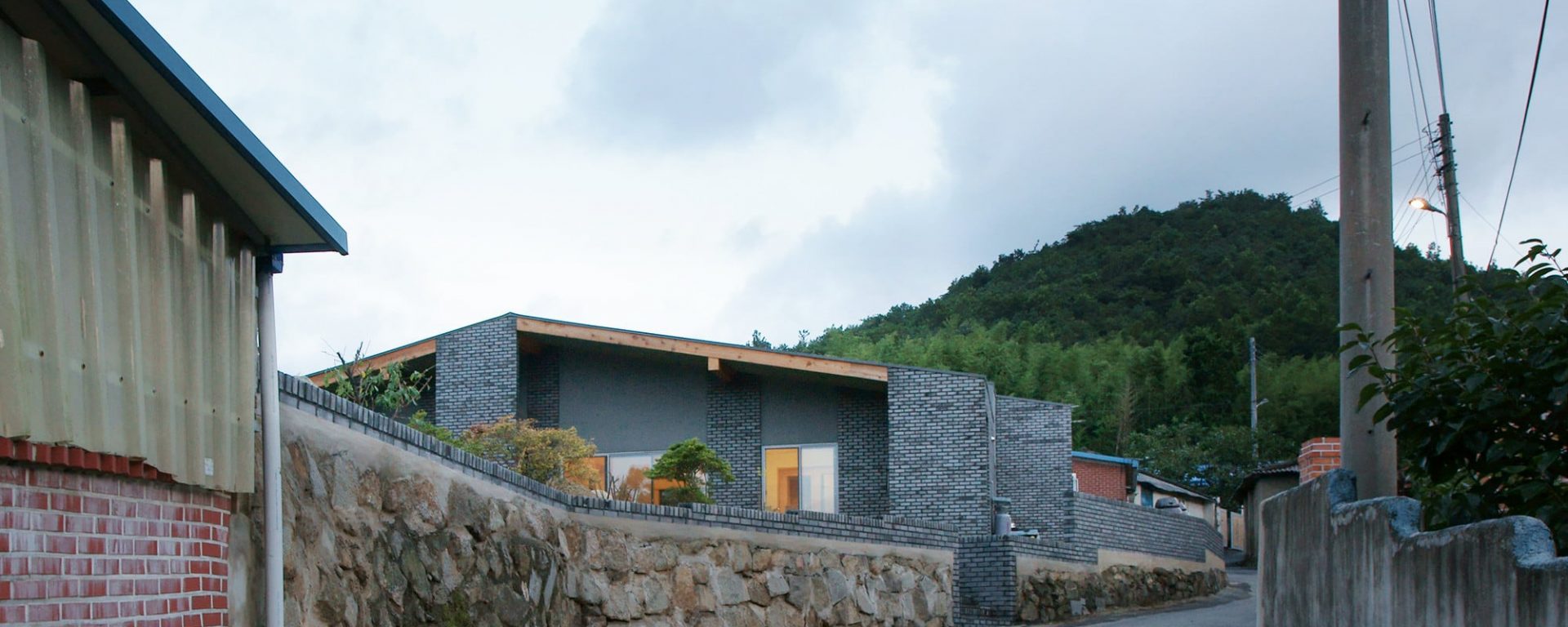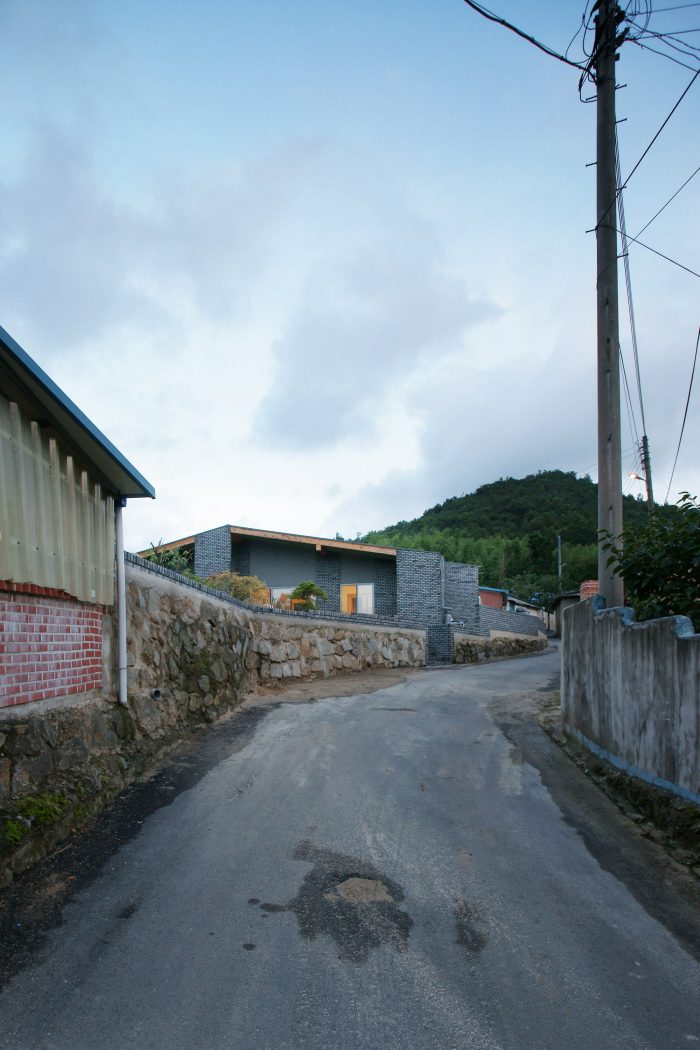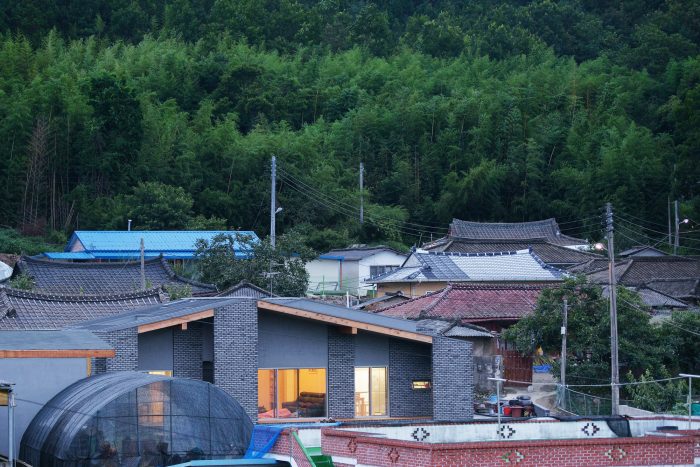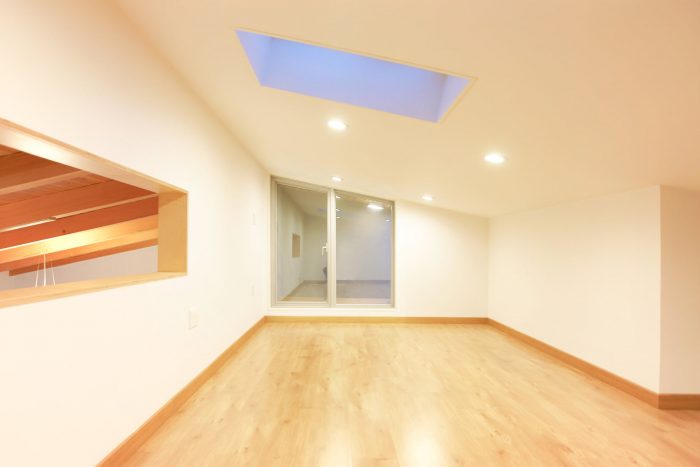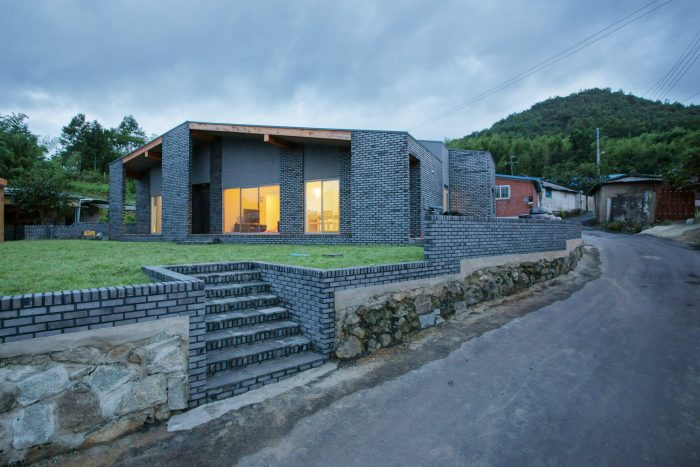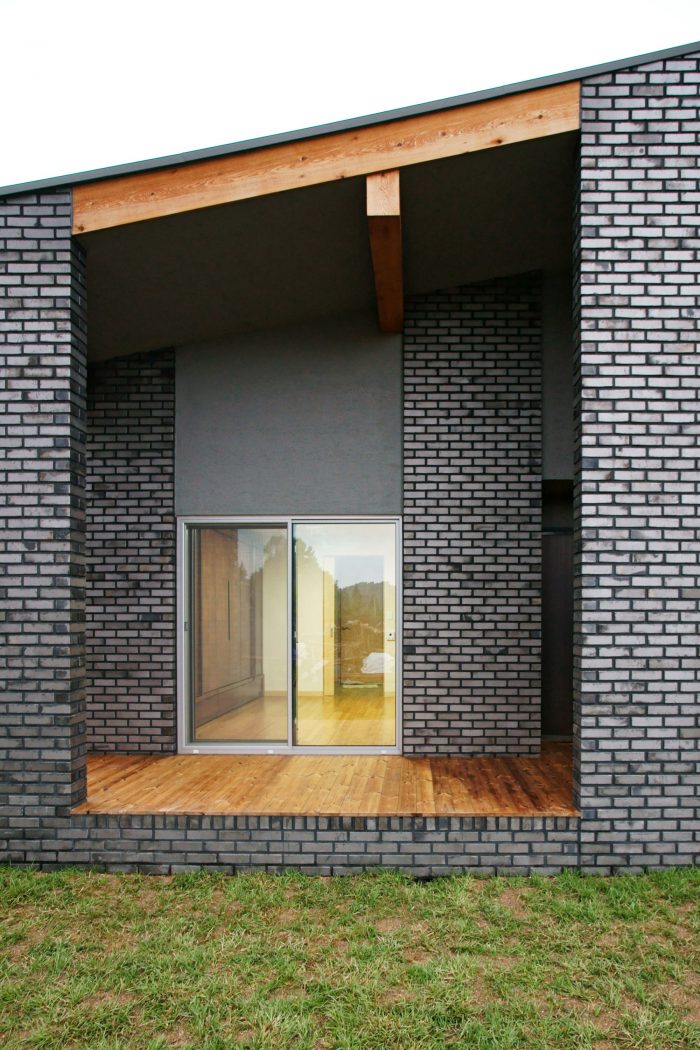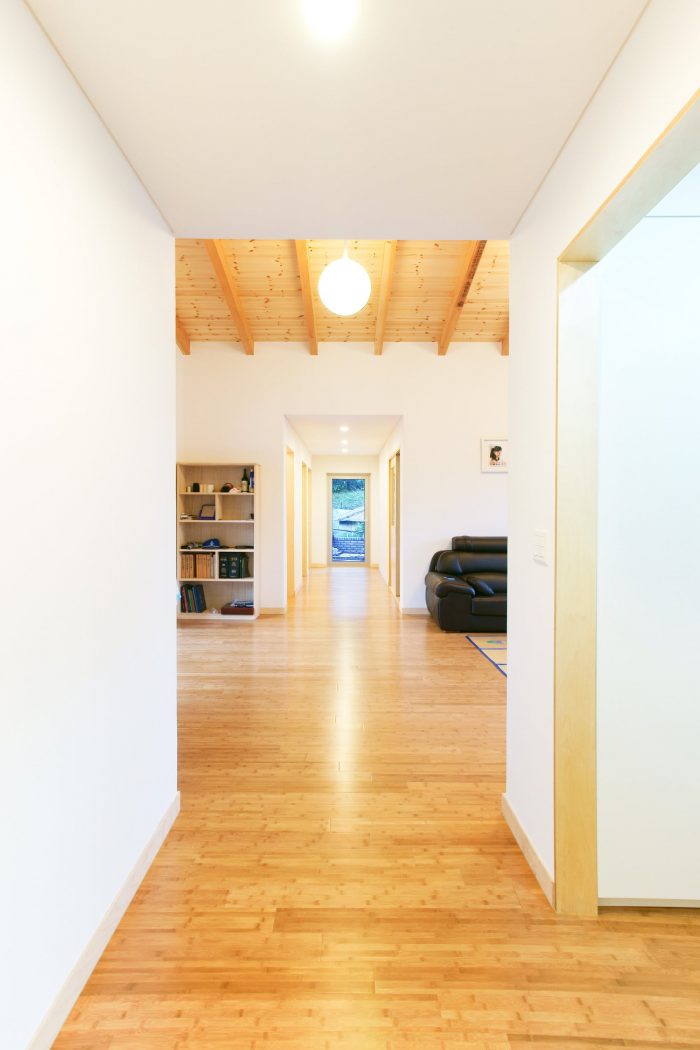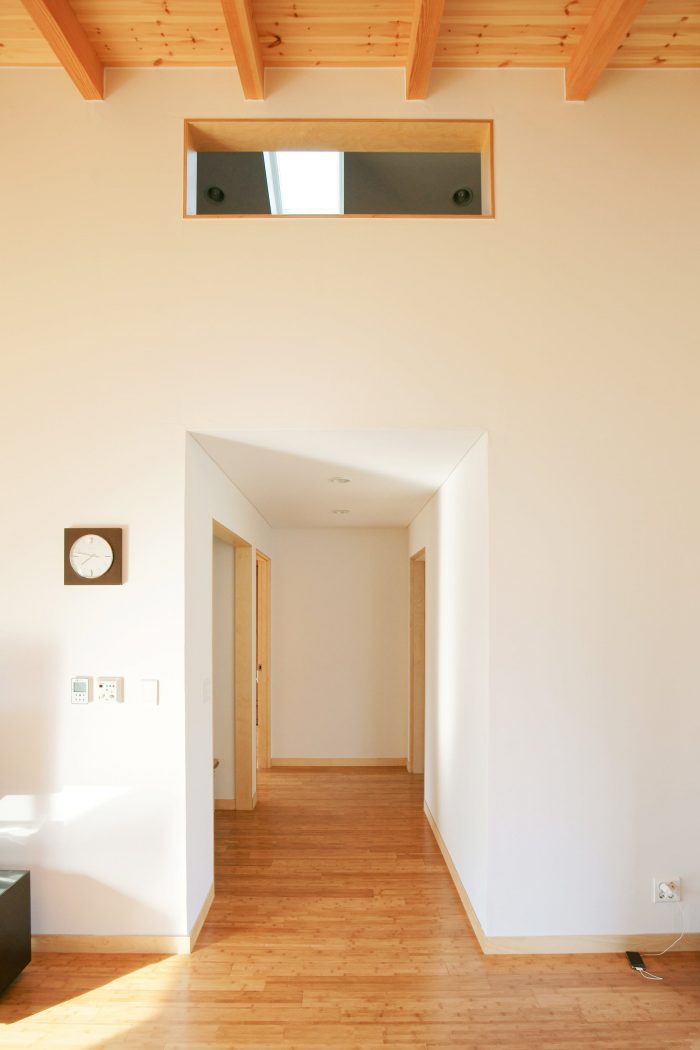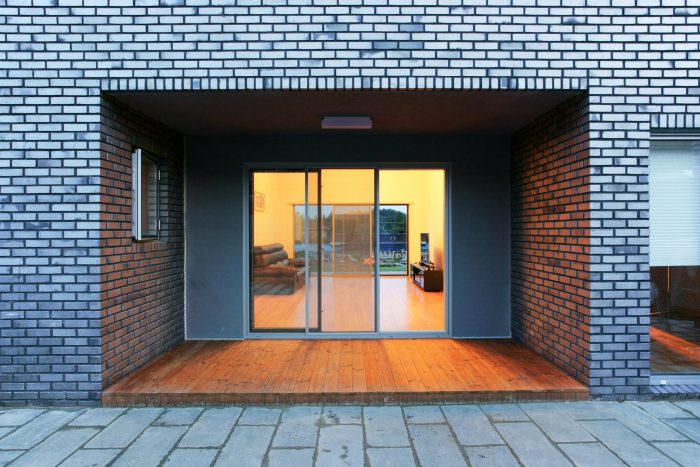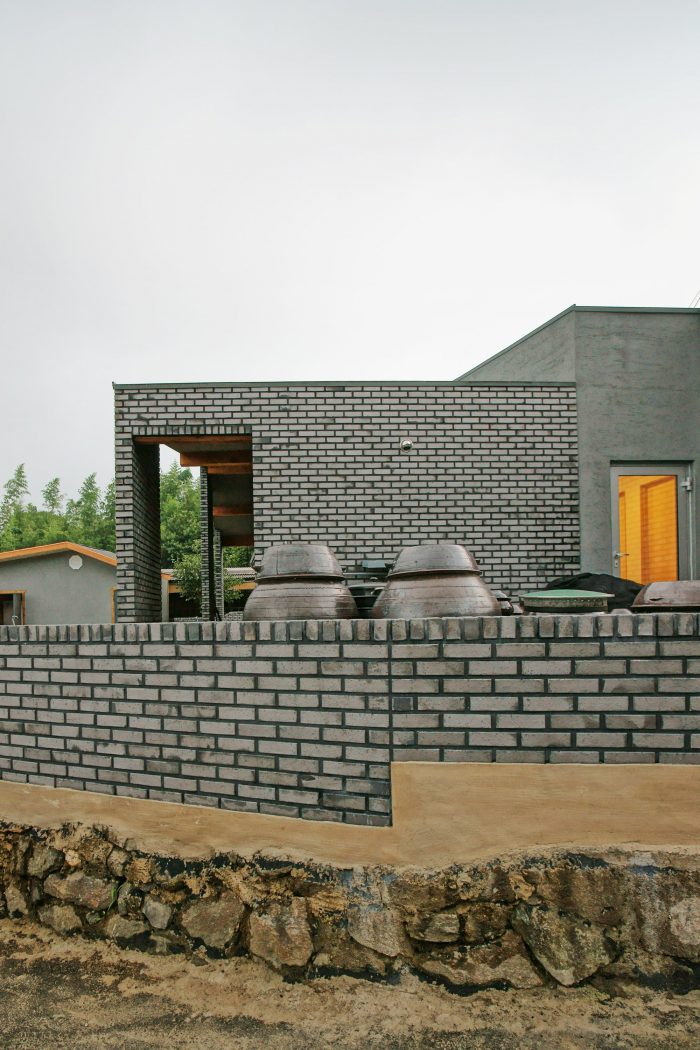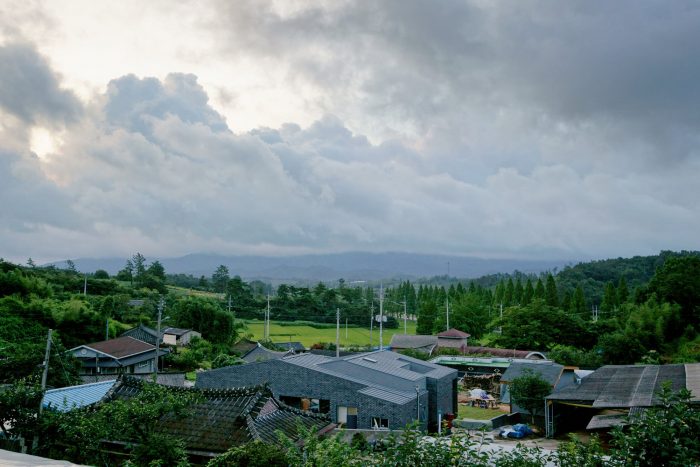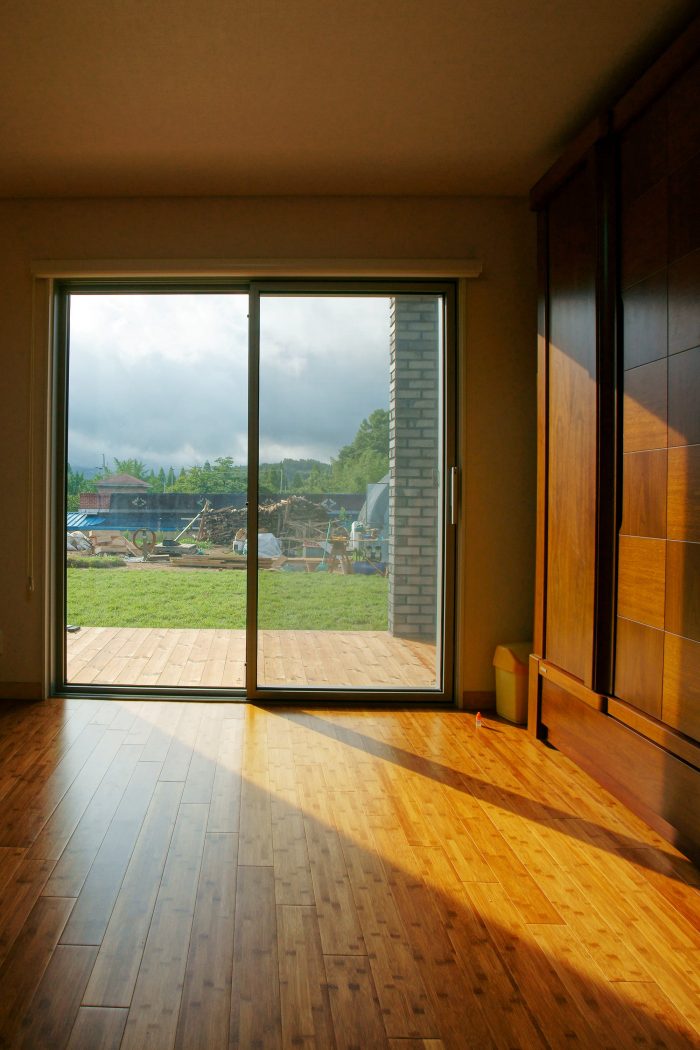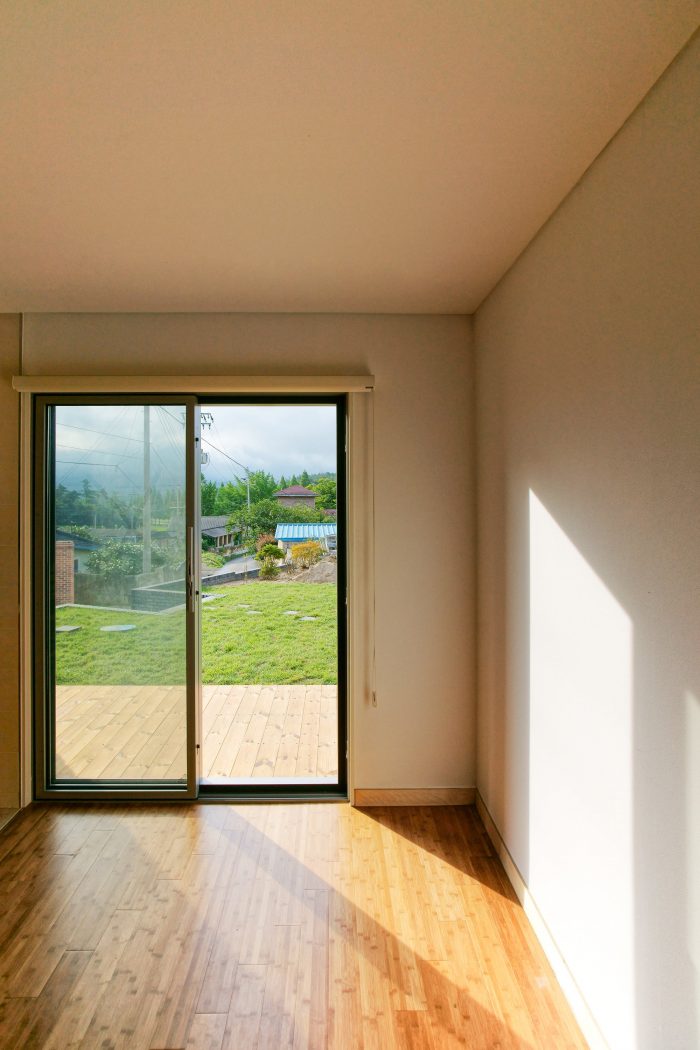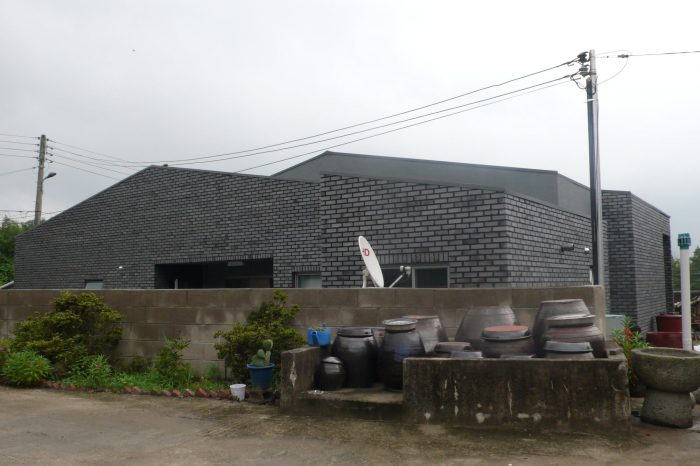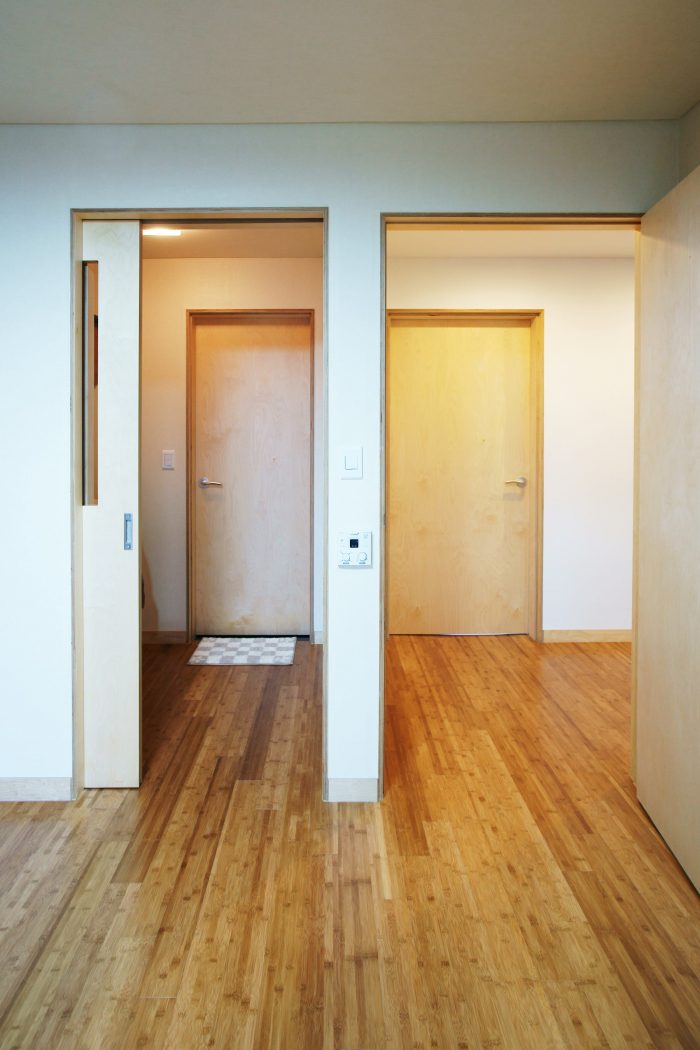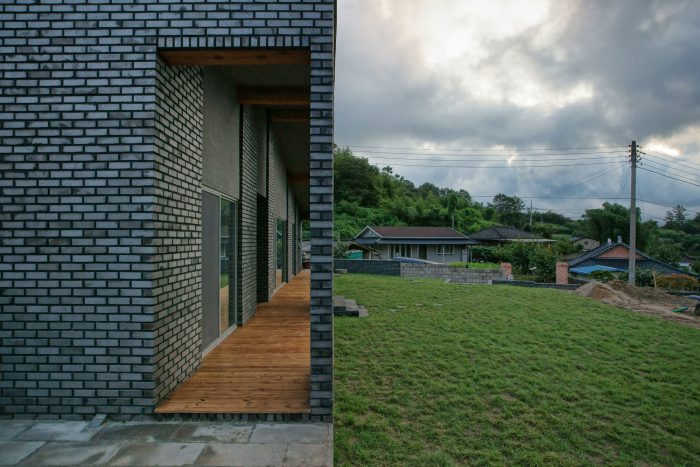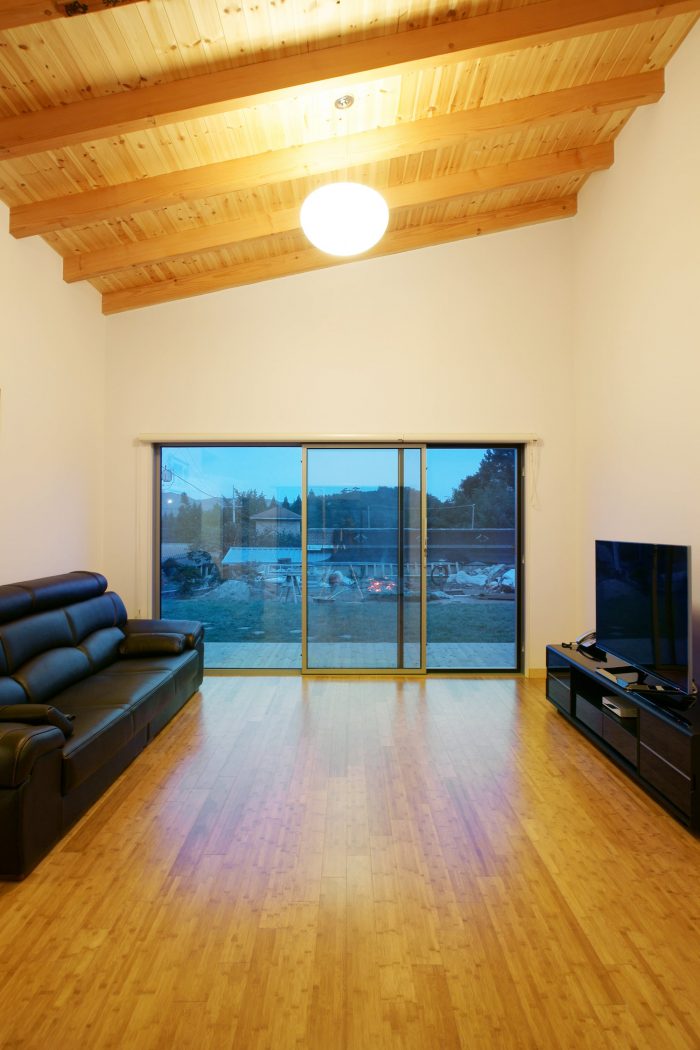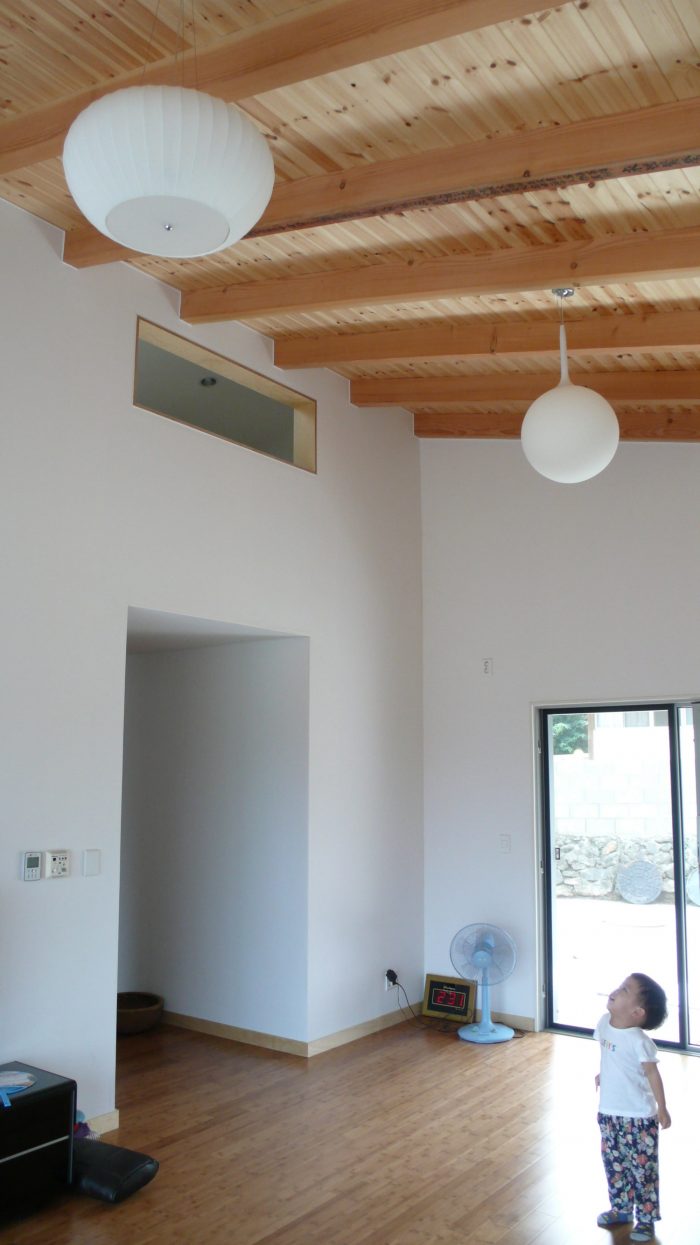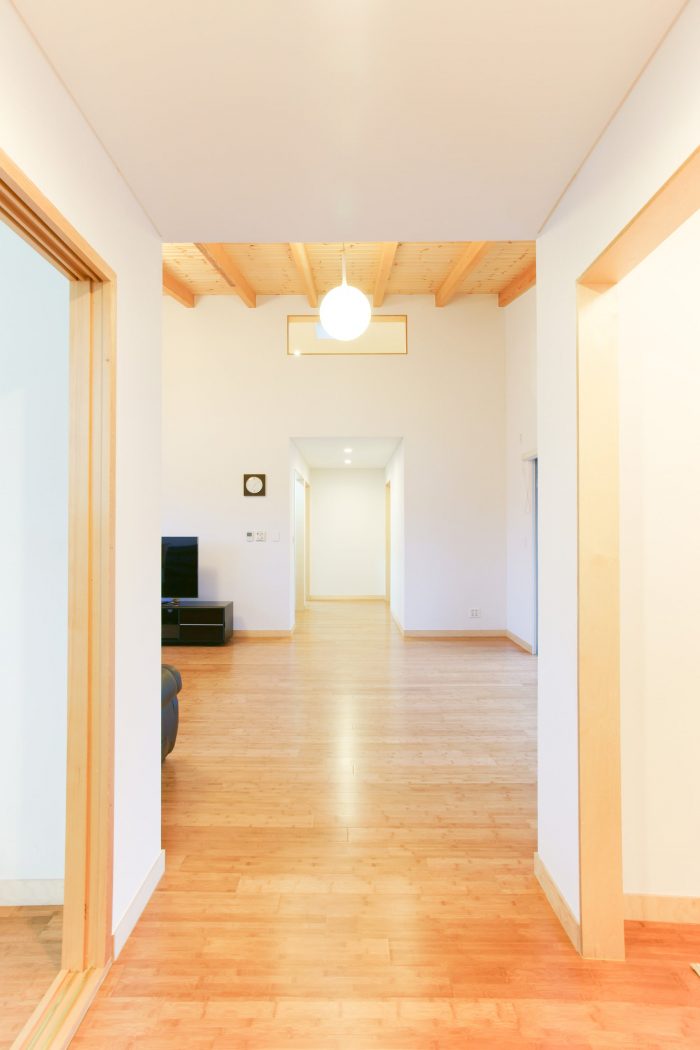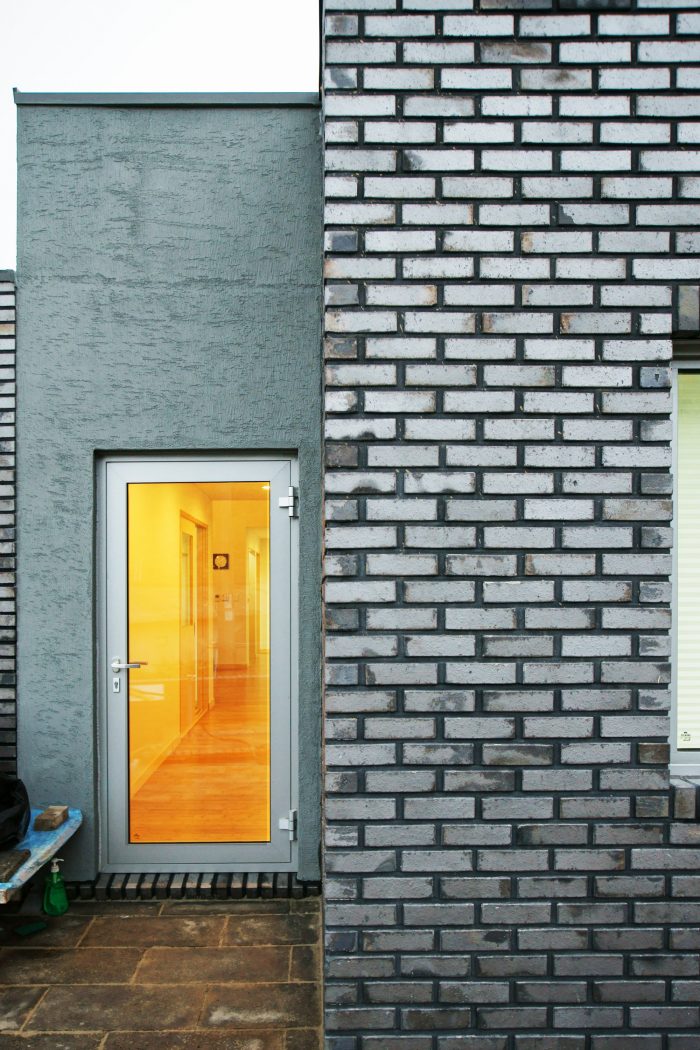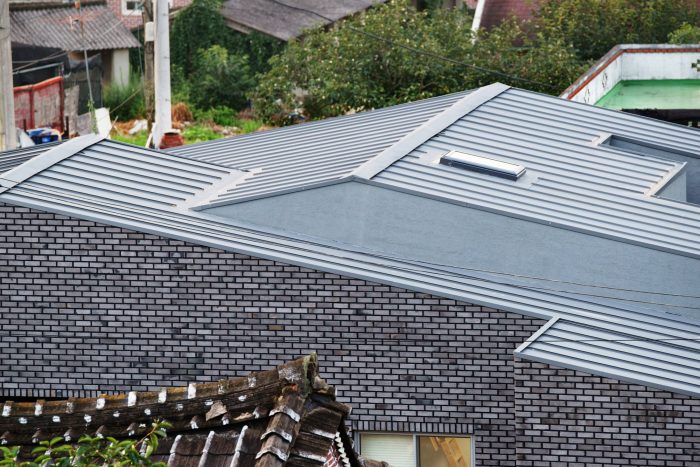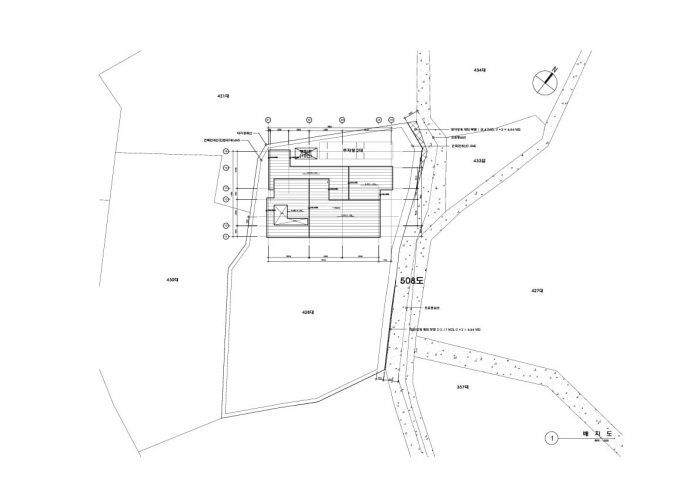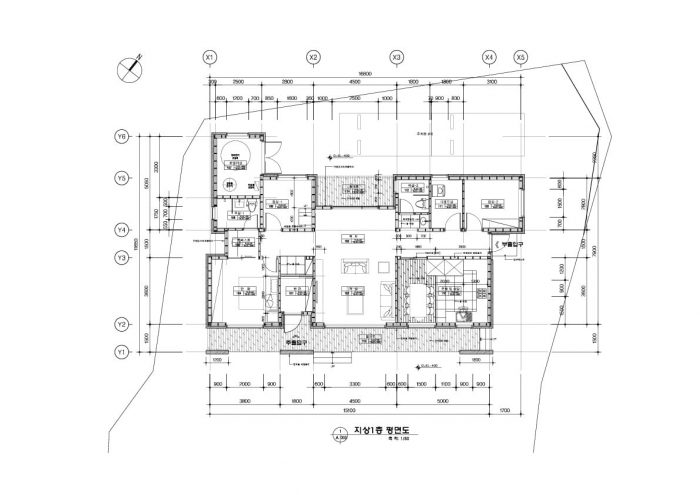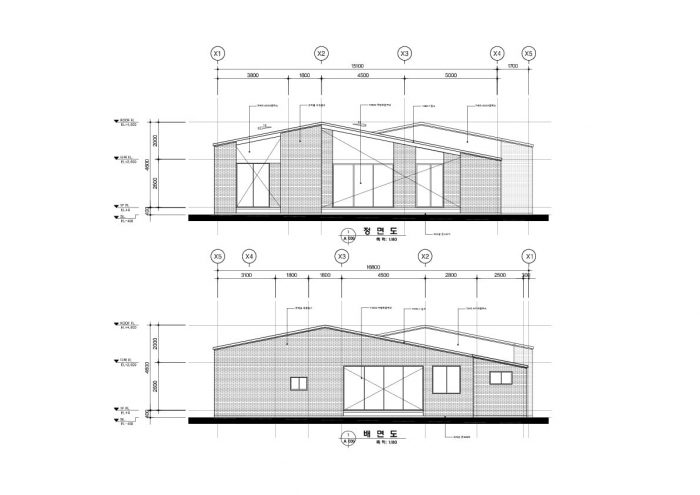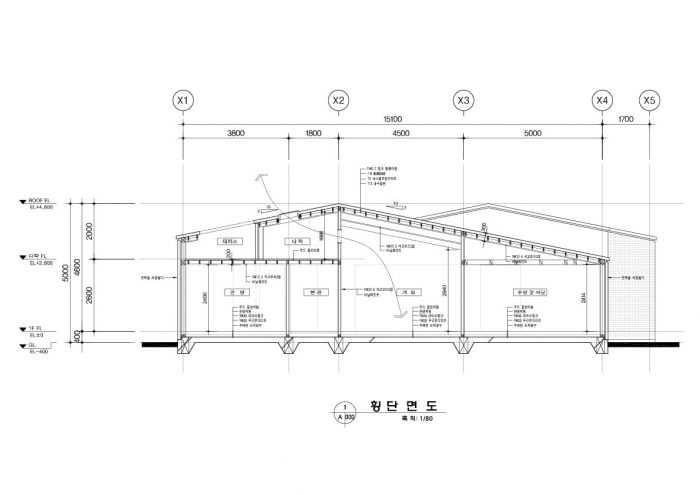40多岁的楼主想在他出生的家乡周围为他年迈的父母建一栋房子,以后自己回乡居住。他要求建一个温暖的房子,有良好的保温效果,因为他以前的房子有严重的天花板冷气问题,而且要建一个不像是全新的房子,因为附近地区是一个古老的小镇。最初,楼主想建一栋单层的平顶板楼。原因是他不想让房子在农村小镇上显得很突出,他想在屋顶平台上举行烧烤聚会,俯瞰小镇。
The building owner with mid 40’s wanted to build a house around his hometown where he was born for his aged parents, and to live afterward, returning to the hometown by himself. He required to build a warm house with good insulation, because his previous house had a problem of serious cold air from ceiling, and to build a house not looking a brand-new house, because the nearby area is a vintage small town. Initially, the building owner wanted to have a one-story flat roof slab building. The reason was that he didn’t want the house to be outstanding in the rural town, and that he wanted to have a barbecue party or so in the roof deck, looking down the town.
在整个基本的设计会议中,由于保温、降雪量以及与附近的山形和小镇巷道的协调,建议采用斜屋顶,结构也自然地从铁混凝土转向轻质框架木。通过观察附近的房屋,我们建议像镇上的其他房屋一样,用传统的砖头完成一层的斜屋顶房屋,并配有Toonmaru(传统韩式房屋中沿着房间外侧的狭窄木质门廊),并通过制作低矮的围栏来方便与邻居的交流。Toenmaru很小,但却是一个有特色的空间,可以用屋顶的屋檐来控制阳光,并且可以通过附近的开放空间来聚集人群。
Throughout the basic design meeting, a slant roof was recommended, due to insulation, amount of snowfall and harmony with nearby mountain figure and town alley ways, and the structure was naturally shifted from ferroconcrete to light frame wood. By observing neighboring houses, one-story slant roof house finished with traditional bricks with Toenmaru (narrow wooden porch running along the outside of room in traditional Korean-style house) was proposed like other houses in town, and easy communication with neighbors was pursued by making low fences. Toenmaru is small, but a characteristic space that can control sunshine with roof eaves, and can gather people through the open space nearby.
由于是一层楼的房子,大部分的关系不能不说是平行的。因此,客厅被设计成一个跨越三条轴线的中心空间。第一条轴线是从主入口到第二入口的穿越轴线,起着通道的功能作用。第二条轴线是从前花园到Toenmaru,再到后花园平台的连续轴线。该建筑是一个固定的结构,但住宅通过该结构感受到外部的变化,并与周边环境进行交流。最后一条轴线是垂直轴线,连接斜屋顶抬起的天花板和屋顶上的阁楼区域,实现半公共客厅,同时自然通风。
Most of relationship cannot help being parallel, because of one-story house. Thus, the living room was designed to be a central space by crossing three axes. First axis is the traversing one from main front entrance to second entrance, playing a functional role of passage. Second axis is the continuous one from front garden to Toenmaru, and to back garden deck. The building is a stationary structure, but the residences feel the outside change through the structure, and communicate with neighboring environment. The last axis is the vertical one to connect the ceiling lifted by slant roof and attic area in the roof, achieving semipublic living room and naturally ventilating at the same time.
它是轻质框架的木结构,但传统的砖被用作外墙材料。对于最近建造的大多数木制房屋,都使用了胶合板上的灰泥,水泥护墙板或锌,但在这种情况下,考虑到与小巷风景的和谐,以及10或20年后自然老化的建筑,建议使用砖块最为合适。在设计过程中,建筑主人积极参与了娱乐工作,我们也可以愉快地来往于现场。
It is the light frame wood structure, but the traditional brick was used as outer wall material. For most of the wooden houses being built recently, stucco on plywood, cement siding or zinc are used, but in this case, the bricks was recommended as most appropriate, considering the harmony with alley way scenery and naturally aged building after 10 or 20 years. Most of the designing process, the building owner actively participated in the entertaining job, and we also could enjoyably come and go to the site.
Architects: UTAA
Area : 160 m²
Year : 2012
Photographs :Hwang Hyo-chel
City:YONGMULLI
Country: SOUTH KOREA

